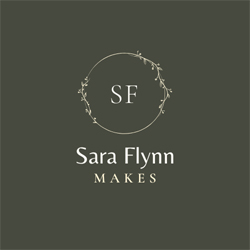Tips for Designing Quilts
It is well known that millennials use the internet for all of their needs. It is therefore not surprising that you have arrived here to learn what a quilt is and the distinctions between a quilt, duvet, and comforter. Given that “winter is coming” and you only have a few time to get these quilts for your new house, it is better if you know what to look for before you go quilt shopping. Now, you might find different types of bedding to keep you warm on chilly nights whether you’re shopping online or strolling down the bedding toppers aisle at malls. However, understanding which category is for what can be confusing if you’ve not much idea on bedding toppers.
A quilt is a distinctive product made by fusing many artistic pursuits. Quilts made traditionally have three layers. three layers: the top, the inner batting layer, and the bottom, which is made by sewing together different materials. Although a quilt can be used to cover a bed, in contemporary society, quilts are primarily used for artistic or decorative purposes.
I’ve just developed a passion for quilting. Throughout this hectic time in life, there is something calming about the methodical, slow process. While many people believe that the process begins at the cutting table, I prefer to concentrate on the design element. Every aspect, from the sketch to the stitch, is crucial, and it’s simpler than you might imagine. We’ve put together a list of quilt design suggestions to assist others in bringing their imaginative ideas to life.
Inspiration
Inspiration can be found anywhere, including right in front of you. You just have to be open to finding it, whether it’s on your smartphone or on your most recent adventure. Pinterest is your friend if you want to curl up and surf through a plethora of eye-catching images. With just one search you can find many fantastic ideas. I advise you to expand your search parameters from the quilt-box. Take a look at the wallpaper, rugs, tiling, and other options. You are able to locate/follow other boards that give you inspiration and even make a board specifically for your designs.
Finished Size
Although there are many various types and sizes of quilts, it is essential to plan your quilt with the intended use in mind from the beginning.
Designing with Graph Paper
Just pick up the pencil and begin sketching. I recommend using graph paper to keep things scale-oriented. Graph paper comes in all different sizes and shapes. Depending on your design, you might want to think about straying from the traditional square.
Setting
A basic quilt block’s direction can be changed to alter the overall appearance and feel of any design. Horizontal, On-Point, Variable Point, Horizontal or Vertical Stripe, and Custom Set are a few typical designs.
Borders & Sashing
Borders and sashing are the perfect solution for framing your design. These remind me of the mat inside a picture frame. It can expand the size of your work in addition to aiding in drawing your attention to the design.
Backing
Although quilts have two sides, so many stitchers just pay attention to the front and only use a large back cloth for the reverse. I urge you to think about piecing your quilt back if you have the time, or to add an additional quilt block from the front design. You can actually use the quilt on either side thanks to this.
Quilting
Every skill level may successfully complete a quilt, from simple long arming detailing to complicated hand knotted knots. What keeps everything together, creates dimension, and adds another degree of artistic style is the stitching of the sandwich layers. Either a domestic machine or a specialized long-arm machine with a frame can be used to complete this layer of needlework.
Binding Matters
Finishing off your edges comes next after all of your layers have been stitched together. Binding can be cut on straight grain or bias. Your quilt’s shape will determine how this turns out. For instance, bias binding’s inherent flexibility is frequently utilized around curved edges.
Label
You’re almost finished and prepared to finish your quilt, but before you do, I strongly advise adding a label. If your quilt is being given as a gift, labeling it is extremely crucial.
Storing
Now that you’ve planned and meticulously stitched this amazing quilt, it’s time to consider where it will reside when not in use. Here are some inventive quilt storage suggestions to help you display your work for everyone to see.
Now that you understand the fundamentals of quilt design, it’s time to get going. It’s a lot of fun, and if you don’t watch out, it might develop into your next creative passion!

